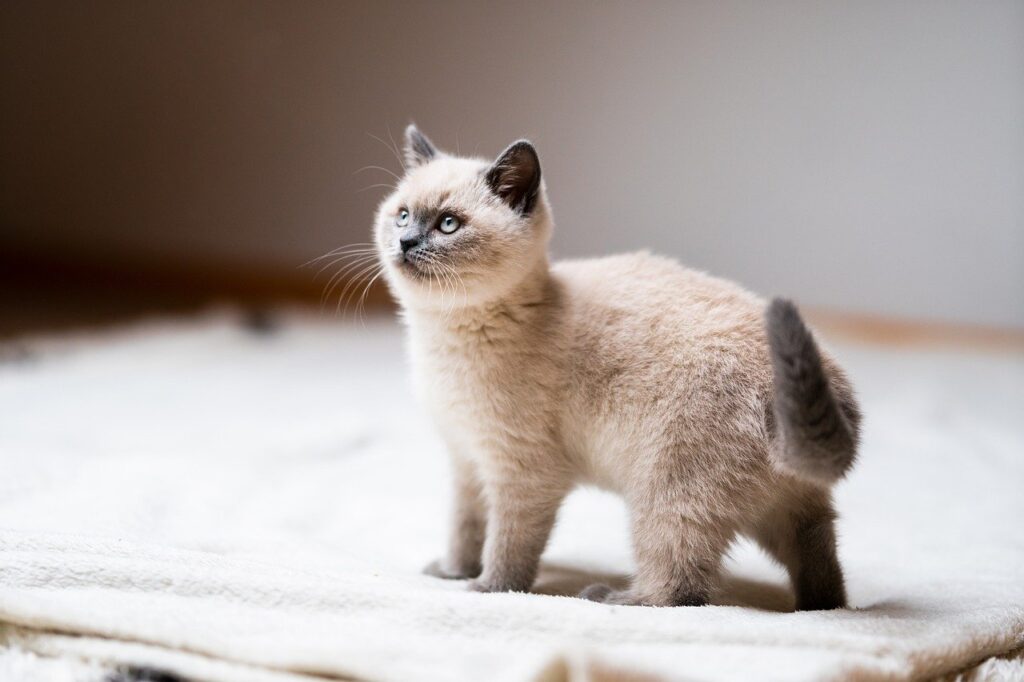Decode Your Cat’s Actions: From Kneading to Quirky Habits, Understand What They Really Mean
Cats are fascinating creatures; they captivate with their charisma, independence, and peculiar habits, which frequently intrigue their human companions. Cats’ antics, such as their propensity to knead and their unexpected bursts of activity, can be perplexing and peculiar. Still, there’s significance in every move, and it’s usually based on gut feelings or impulses. You can better meet your furry friend’s requirements and strengthen your bond with them if you take the time to learn about their behaviors.
To help you better understand your feline buddy, we’ll explore the interesting realm of feline behavior in this essay, including topics like headbutting, zoomies, and kneading.
Why Understanding Cat Behavior is Important
Cats may seem aloof at times, but cats are actually very sensitive and emotionally intelligent creatures. They act in ways that express how they’re feeling, how healthy they are, or what they need from their surroundings.
Once you learn your cat’s cues, you may respond in a way that makes them feel loved and cared for. Acquiring a better familiarity with your cat’s behavioral cues can also aid in the early detection of stress or disease, allowing you to administer the appropriate treatment. By learning how to “read” your cat, you may improve your relationship and make your home more harmonious.
The Art of Kneading: What It Really Means
When cats knead, they press their paws into soft surfaces, usually in a rhythmic motion, which is both a distinctive and endearing action. Cat owners may find this practice, which is sometimes referred to as “making biscuits,” to be both endearing and perplexing.
A Comforting Routine from Kittenhood
Cats start kneading as kittens while nursing from their mother. By moving in this way, you can ease discomfort and encourage milk flow. Adult cats still find comfort in kneading as a means of self-soothing and re-establishing a sense of safety and warmth.
Displaying Affection
Lying on your lap, crumpling? It’s a sure sign that it’s content, at ease, and safe. In the feline world, kneading is a compliment—it shows your cat trusts you and feels confident enough to relax—even though the claws can be painful at times.
Marking Territory
The kneading motion is one method cats mark their territory, along with the smell glands found in their paws. Your cat can be claiming you as their own and leaving their fragrance behind when they knead on your lap. Kneading is more than simply a sign of affection; it’s also a way for your cat to claim you as its own.
Preparing a Spot to Relax
Cats will often knead to make a cozy bed for themselves when they’re out in nature. Their ancestral practice of making beds out of grass or leaves is an innate part of who they are. Domestic cats nowadays will frequently knead soft objects, such as cushions, blankets, or even people, before they lie down for a nap.
Understanding the Cat Zoomies
Have you ever caught your cat just going wild and sprinting around the house for no reason? That’s what we call the zoomies. There is a simple explanation for these energy surges, which happen at strange hours and might be perplexing.

Energy Discharge
Cats need to let off all of their pent-up energy, especially the younger ones. This quick burst of activity is a defense mechanism for domestic cats, since they rarely get the opportunity to hunt and pursue prey. The zoomies are a great way for your cat to expend some energy, and they may also indicate that they’re in the mood to play or be active.
Post-Litter Box Ritual
It is possible that the sensation of exhilaration felt by many cats after using the litter box causes them to display zoomies. This innocuous and entertaining behavior may appear strange at first.
Time of Day Matters
Because of their crepuscular nocturnal behavior, cats are most active during first light and last light. Because their internal clock produces spurts of energy, it’s normal to watch your cat zipping around during these moments.
Tail Flicking: What Your Cat’s Tail Tells You
One of the most expressive aspects of a cat’s body is its tail, which it flicks to tell you what it’s thinking. Get to know your feline friend’s emotional status by understanding its tail signals. So, here’s how it works:
Tail Held High
A cat’s confident tail-high pose indicates happiness and security. This position usually indicates a happy, comfortable cat. When approaching their favorite humans, cats raise their tails to demonstrate trust and affection. Cats often explore with their tails high, indicating curiosity.
Tail Flicking or Lashing
Rapid tail flicking or lashing indicates agitation or annoyance. Anxious or overstimulated cats flick their tails. If your cat’s tail flicks when caressing it, it may be done with interaction and wants to be left alone. It may also precede swatting or biting. Avoid undesired reactions by giving your cat space if the flicking gets quick and intense.
Slow, Gentle Tail Swishing
A cat may gently move its tail from side to side. This usually indicates that your cat is watching a bird outside the window or playing with a toy. It indicates focus and interest, not irritation. Your cat’s tail movement indicates mental stimulation and alertness.

Puffed-Up Tail
Cats puff out their tails when scared or threatened. This defensive action makes the cat appear more menacing to predators. An arched back, flattened ears, and a puffed tail indicate fight-or-flight in your cat. Your cat is stressed and vulnerable if its tail is puffed up, therefore remove the source of worry.
Tail Tucked Between Legs
A tail between the legs indicates dread, nervousness, or submission. When threatened or uncomfortable, cats may tuck their tails. This stance shows that your cat is insecure and attempting to appear small and harmless. Some cats tuck their tails to submit to a dominant cat in multi-cat households.
Quivering Tail
You may occasionally observe your cat’s tail tremble or vibrate which indicates tremendous eagerness or expectation. Cats may do this when they are hungry or excited to see their favorite person. When “spraying” to leave their smell, some cats quiver their tails. It’s good when accompanied with excitement, but spraying should be managed.
Knock Things Over
Things on tables, bookcases, and worktops sometimes end up on the floor because of cats. Their human friends can find this apparently malicious conduct both amusing and annoying.
Exploring Their World
The paws are a cat’s primary means of exploring and investigating its environment. They learn about an object’s texture, weight, and motion by toppling it over. They can engage with their surroundings and fulfill their natural curiosity in this way.
Attention Seeking Behavior
A cat’s attention-seeking behavior may occasionally involve knocking objects over. Swatting an object off a table will ensure a reaction if you’re busy or ignoring them. To a bored cat, any kind of attention, even scolding, can seem like a prize.
Hunting Instincts
The natural hunting behavior of cats may also include knocking things off surfaces. Cats will swipe at their prey in the wild to gauge its reaction time. The swatting motion allows them to determine if an object is alive and worthy of being pursued.
Purring: A Sign of Contentment or Pain?
Among the many endearing things a cat can do, few can match its purring. Cats purr for a variety of reasons, some of which might surprise you, although it’s usually linked with joy.
Contentment and Relaxation
When a cat is happy, relaxed, and secure, it will likely purr. A cat’s purring is probably a sign of contentment and joy if it is curled up, being petted, or laying in a warm place. They are showing that they are relaxed and having fun by doing this.
Self-Healing Mechanism
Curiously, when cats are sick or in pain, they may purr even more. Some people call this sound “healing purring.” The vibrations produced by purring have the potential to alleviate pain, speed healing, and even assist in the regeneration of bones, according to research. So, if your feline friend is purring away, but it doesn’t appear to be acting normally, it could be trying to calm itself.
Seeking Comfort or Attention
When cats are anxious or upset, they may purr to get someone’s attention or soothe themselves. This explains why certain felines may purr while they’re scared or uncomfortable, such when they go to the clinic. It’s an indication that they need to be reassured and a method for them to calm down.

The Love for Boxes
The fact that cats adore boxes is common knowledge. Some cats will insist on using a cardboard box as a makeshift bed, even when presented with plush blankets and beds. This conduct is not limited to just boxes; it may be observed in any small, cramped area, such as drawers, sinks, or even shoes.
Sense of Security
Felines prefer to hang around in small, confined areas. Wherever they could find cover, whether from predators or prey, they would use these areas when they lived in nature. They can rest well in a box since nothing can sneak up on them.
Coziness and Harmony
Cats love to curl up in confined places and boxes because of the heat they trap. A box can provide the cozy sensation of an enclosed nest for cats, which much like being warm.
Stress Relief
As soon as they start to feel nervous or stressed, cats seek refuge in small, enclosed areas. A box can offer them a peaceful, isolated space to unwind and feel protected from the mayhem around the house.
The Headbutt: A Feline Sign of Affection
If your cat has ever gently knocked its head against you, this is known as headbutting or “bunting.” It’s a strong expression of love and devotion, not to mention a charming gesture.
Marking You with Their Aroma
Cats transfer their scent onto you when they headbutt you; this is because cats have scent glands on the top of their heads. This is their method of welcoming you into their domain and showing that they trust you.
A Touch of Warmth
One way cats demonstrate affection is by headbutting. It’s a soft, non-verbal expression that says, “I like you.” Think of it as a compliment if your cat headbutts you; it means they’re at ease around you.
A Request for Attention
Your cat may try to get your attention with a headbutt every once in a while. As a courteous request for some attention, they may gently nuzzle you with their head if they desire to be petted or rubbed.

